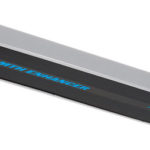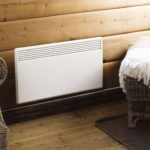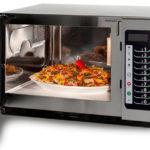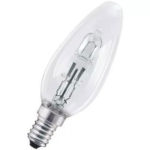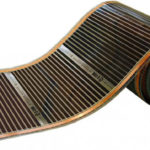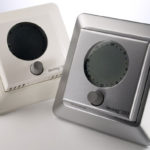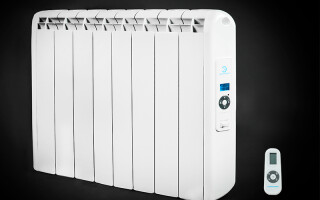Electric heaters serve to create comfortable temperature conditions in residential and technical rooms. Electric heaters are used both independently and in addition to the existing heating system.
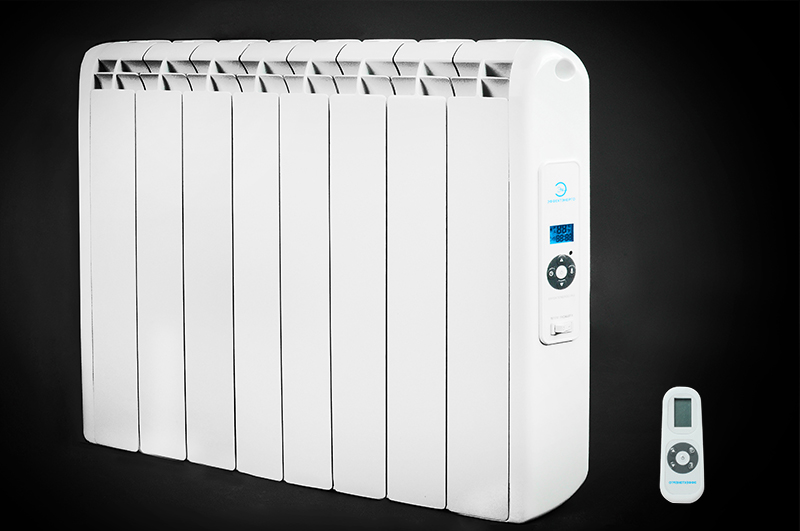
Contents
Types of electric heaters
All home heaters use the principle of converting the energy of electric current into thermal energy. On this principle, such devices work:
- Infrared heating systems;
- convective (convectors);
- quartz;
- heat guns (heaters);
- oil.
Each of these types has its own characteristics, which determine the scope of application. Compared to others, electric heaters are economical and the most efficient. They have many heating power options, external design and design features.
Infrared
Infrared heating systems are characterized by the fact that they do not warm the air directly. Heating is done by means of infrared radiation, which is captured by optically opaque materials. The heat is then transferred to the surrounding air (heat transfer process).
Infrared heaters are similar in principle to the sun's rays, which also do not warm the air. However, if the choice is not right, they can be compared to a campfire that only heats the side of the object that is directly exposed to it. This is typical when using low-power heaters in a large volume room.
In smaller rooms, infrared systems have the advantage that the instantaneous radiation that spreads heats all objects that are in the area, and those simultaneously transfer heat to the surrounding air.
An economical heater becomes ineffective if the wrong installation site is chosen, when objects in the room's furnishings are in the path of the radiation. Infrared heaters are not the most efficient because part of the radiation is in the visible part of the spectrum (yellow-orange light) and does not serve as a heat source.
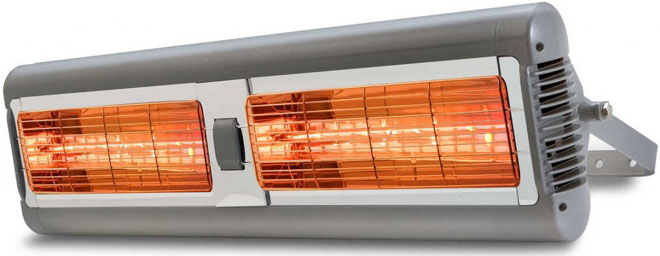
Convectors
Convectors work on the principle of creating a directional flow of warm air that moves naturally by means of convection. The heating element with a ribbed surface for better heat transfer is located inside the hollow body near the air intake openings. The heated air, being lighter, rises and exits through the inclined slots. The heated air is replaced by cold air. This process continues continuously as long as the heater is plugged in.
Most designs are equipped with temperature sensors that control the temperature of the circulating air. When the temperature reaches a set value, heating is turned off at the command of the temperature sensor.
Electric convector-type heaters are convenient because they can be installed under windows in rooms, and then due to the rising heated air a screen is created, cutting off the flow of cold air from the windows.
The disadvantage is that the moving air entraps the dust. Convectors heats the room slowly, since the entire volume of air is involved in the heating process.
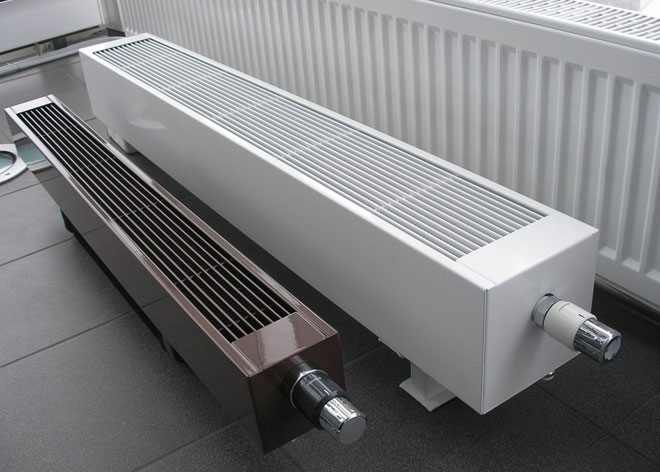
Quartz
Quartz type heaters include 2 heating systems. The first one discussed above is infrared heaters. Classic quartz heaters refer to monolithic panels made of a special quartz-based composition, with a resistive heating element inside.
Due to the fact that the heater is in direct contact with the body-emitting panel, such a device has a high efficiency of over 90%. Heating occurs in two ways - by the panel's infrared radiation and convection of heated airthat receives heat from contact with the panel.
Modern quartz-type heaters have a wide variety of external surfaces, which depends only on the imagination of the manufacturer. On sale you can find quartz panels in the form of pictures, which can serve as a design decoration of the room. A wall-mounted flat-panel heater can always be organically integrated into the interior. Many models have electronic control of the modes of operation.
Heat guns
The principle of operation of a heat gun is to create a flow of air, driven artificially through a heating element heated to a high temperature. A nichrome spiral is used as the element that heats the air.
Household heaters have a fan speed control, which allows you to change the speed of the air flow and adjust the heating coil.
With the help of heat guns you can heat a large volume of rooms in a short time.
The big disadvantage of heat fans is high speed of air movemententrains dust. Dust, getting on a heated coil, contributes to an unpleasant smell. A fan heater that has not been in operation for a long time has a lot of dust inside. When the voltage is turned on, the heating element heats up to a high temperature and the dust can ignite, releasing harmful substances and serving as a source of fire.
The heated coil has little mechanical strength and can short-circuit several coils when striking the fan housing. The result can be an internal short-circuit that can overload the electrical system and cause a fire.
Oil
Oil heaters are safe to use because the heating element is placed in a tank of mineral oil, which is an insulator and coolant. The heated oil rises to the top of the heater under the action of convection, giving the heat to its body.
For ease of use oil heaters are equipped with several heating stages and oil temperature sensor, which is manually set to the desired temperature. Designs have a mechanical or electronic control.
Oil heaters have disadvantages such as their heavy weight and massive housing design, which does not fit into the interior of the room.
One of the features of this type of devices is high inertia. A large volume of oil requires time to warm up to the required temperature. On the other hand, when the voltage is turned off, such a heater retains heat in the room for a long time.
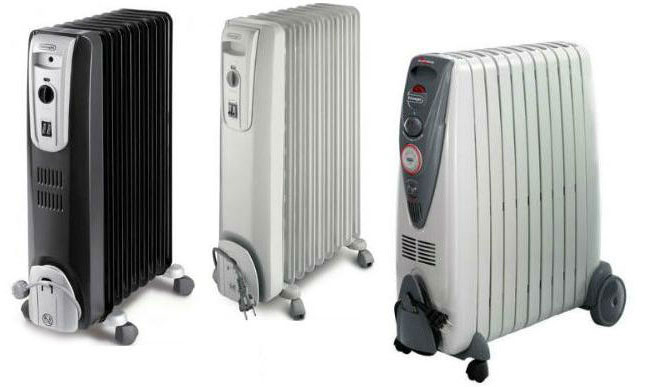
Plen
A new type of heating elements film infrared heating. The heating element is a strip of high resistance type placed between layers of durable transparent polyester film. The back side of the heating element is covered with a layer of aluminum foil, which is a reflector of infrared rays.
PLEN heating belongs to the systems of infrared heating, but is characterized by low temperature of the working surface - not more than +50 ° C. Such temperature is safe in terms of fire and leads to invisible infrared radiation in the wavelength range of 8-10 microns. Such radiation is able to penetrate thin surfaces. Therefore, it is convenient to place PLEN heaters in suspended ceilings.
Downward radiation heats the floor surface to a comfortable temperature of +24 ... +25 ° C. At human height, the air temperature in a heated room is +18 ... +19°C, which is the optimum value.
Consider economical efficiency
Any economical electric heaters can work with the best efficiency only if the type is chosen correctly in relation to the requirements. So for zonal heating of sections of a room, infrared heaters will be more effective. For complete heating of small rooms, convectors or quartz or oil heaters are better suited. Rapid distribution of heat can be provided by a heat gun.
When choosing, it is also necessary to consider the cost of designs. The most economical heater may not justify its cost if used rarely. Therefore, the hourly operating hours of the device, the electrical energy consumed during that time and the heating efficiency should be taken into account when calculating the cost-effectiveness.
A small rating of economical models
Among the variety of household devices, it is difficult to unequivocally determine the best heaters. If you start from the cost-effectiveness, the most appropriate is the use of PHLEN systems. Somewhat less efficient are quartz panels and infrared heaters. Heat guns are also quite effective, but their use is complicated by the fact that heating a room in a very short period, the devices of high power at this time consumes a large value of current.
The most efficient devices have a higher cost. This is eventually recouped by their economy, efficiency and consumer qualities. Electric heaters are the most environmentally friendly among their counterparts.
Related articles:
